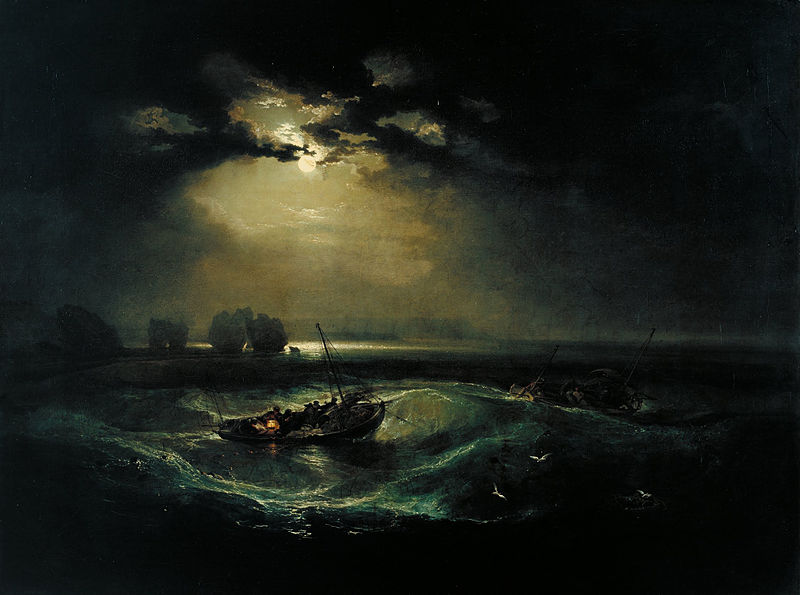
J. M. W. Turner, Fishermen at Sea, exhibited 1796, oil on canvas, © Tate, London.
Reader question: “How did Constable and Turner decide to emphasise the emotion in their landscapes?”
Well, that’s a great question, because Constable and Turner were of course all about emphasising emotion. Constable even once wrote that painting “is with me but another word for feeling”.
For those who don’t know (or need a refresher), John Constable and J. M. W. Turner were both British landscape painters, who were alive during around the same time (end of the 18th century to the beginning of 19th century), and who are both associated with the Romanticism movement. Although they were different in many ways—with Constable often taking a more serene and pastoral approach to nature, and Turner using turbulent scenes of nature to reflect social or philosophical concepts—they both used landscape painting as a primary way of creating emotional reactions in their viewers.









